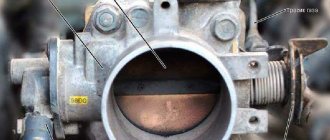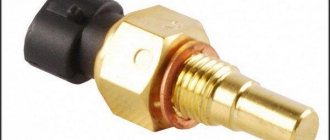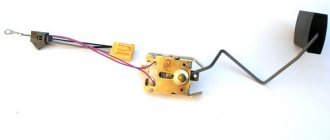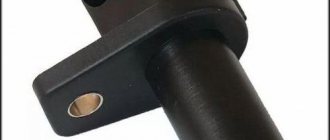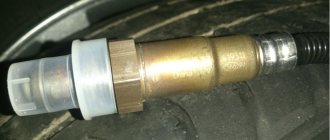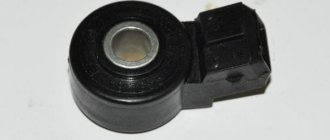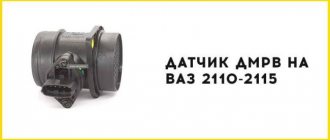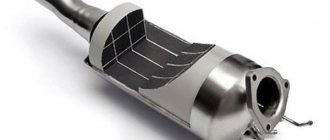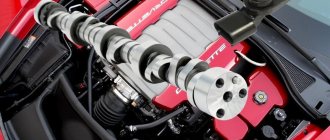In this article we will look at the phase sensor using the example of Samara (VAZ 2114-2115). It is worth noting that the phase sensor is one of the main sensors with which the controller calculates the operating parameters of the engine on Russian-made injection engines.
The phase sensor, or as it is called, the camshaft position sensor, is installed on eight and sixteen valve domestically produced cars with Euro-3 environmental standards.
What is a phase sensor used for and how does it work?
The camshaft position sensor determines the operating cycles of the internal combustion engine. The camshaft cams drive the valves, and the DF determines which valve is open. This is an integrated control unit, that is, it includes a sensitive element and a signal conversion system. There is a Hall element there - data is taken based on changes in the magnetic field.
The converter has a bridge circuit, a converter block, and an output stage. The work is that the DF determines the intake and exhaust phases of the 1st cylinder.
For carburetor engines it is not needed because the spark is supplied at the moment of compression and at the end of the exhaust gases. DPKV is sufficient for this.
Roughly speaking, the VAZ 2114, 2115 phase sensor functions as a fuel injection system. If it breaks down, the work of sparking falls on the crankshaft position sensor. The designs that are used on 16-valve cars differ from eight-valve ones.
Now let's try to explain in simple words how the phased injection system works. It turns out something like this: the DF gives a signal to the electronic engine control system (ECM), and it, in turn, gives a command to inject fuel, while the intake valve begins to open, and after it has opened, air is sucked in and mixed with gasoline to form a mixture.
Description of the knock sensor
Now let's talk about the knock sensor. Let's start with the location and purpose of the controller.
Location, purpose and device
The DD in the Four is one of the main elements that determine the correct operation of the power unit. The main design element of the knock sensor is the piezo mechanism. When a load is applied to the knock sensor, the device generates an electrical pulse that is sent to the control module. The block detects the occurrence of detonation in engine operation, according to which it changes the ignition timing.
As for the location, in the VAZ 2114 the DD is located on the engine cylinder block, between cylinders numbered 2 and 3. If your car is equipped with an 8-valve engine, then you will immediately see the controller when you open the hood. As for 16-valve internal combustion engines, in this case it will be more difficult to find the sensor, since the view is blocked by the cylinder head.
Possible malfunctions and ways to eliminate them
What signs can be used to identify problems with the detonation controller:
- a significant drop in power, which is especially evident during acceleration;
- a Check icon appeared on the instrument panel;
- when you sharply press the gas pedal, detonation may be heard - a metallic knock, as experts say - “fingers” knocking;
- In some cases, the engine may overheat.
Controller failure is usually caused by regular use of low-quality fuel.
Instructions for diagnosing and replacing the controller
The diagnostic procedure can be carried out either using a tester or using an ohmmeter. When using a tester, the device itself will need to be connected to the connector for testing and diagnostics of performance. If you only have an ohmmeter, then you will need to measure the voltage between the controller contacts.
How to check the functionality of the DD:
- First, the measuring limit of 200 mV is set on the voltmeter.
- Then it is necessary to connect the probes of the diagnostic device to the contacts of the regulator.
- After this, try lightly tapping the controller body with a screwdriver or other similar tool. When you tap on the case, the voltage value on the tester display should increase to 20-40 mV, in this case it all depends on the force of the blow. If there are no changes as a result of the impact, then you need to change the DD to a new one (the author of the video is Alexander Dmitriev).
To perform the replacement you will need to do the following:
- Prepare standard plumbing tools - wrenches and screwdrivers; you will also need sandpaper or a steel brush. Turn off the power unit and turn off the ignition, and then open the hood.
- Then you will need to find the DD, press the latch and disconnect the wiring connector from the knock regulator.
- Using a wrench of the appropriate size, you need to unscrew the nut with the stud (if your car has a two-pin DD). If a resonant type controller is installed on the engine, then you need to remove the piezo element.
- After this, the contacts on the connectors will need to be cleaned with sandpaper or a wire brush - remove all dirt and oxidation. If this is not done, problems may arise in signal transmission - the pulse will not be accurate. When the cleaning is complete, install a new one instead of the old one.
How to check phase sensor 2114
You can check the sensor using a voltmeter. Below are several options for checking phase sensors.
Checking the phase sensor 21110-3706040
It is necessary to set the voltage on the voltmeter V1 on the power supply E to 13.5 ± 0.5 V, the voltage at contact “B” of the sensor must be at least 0.9 Up.
Next, we bring the plate to the end of the sensor and look at the operation of the sensor. It should work. This can be determined on contact B. When the sensor is triggered, the voltage on contact “B” should be no more than 0.4V.
We remove the steel plate from the end of the sensor and measure the voltage again, it should change to a value of at least 0.9 Up.
Checking the phase sensor 21120-3706040
Set the voltage at voltmeter V2 on power supply E to 13.5±0.5V, the voltage at contact “B” should be no more than 0.4V.
Bring a steel plate made of soft magnetic material with a width of at least 20 mm, a length of at least 80 mm and a thickness of 0.5 mm to the end of the sensor as shown in the figure, placing it in the slot of the housing. The voltage at contact “B” of the sensor must change and be at least 0.9 Up.
Remove the steel plate, and the voltage at contact “B” of the sensor should change to a value of no more than 0.4V
Verification methods
The DPRV of the VAZ-2115 car is located under the air filter, installed near the cylinder head. In order to check its functionality, it is necessary to remove the power socket and dismantle the part.
Visual inspection
The first way to check the performance of the DPRV is a routine external inspection. The causes of the malfunction are the following:
- Cracks and chips on the body can cause penetration. A complete replacement of the part is required.
- Oxidation or breakage of contacts in the connecting socket is the reason for the lack of connection between the DPRV and the ECU. Cleaning the contacts will fix the problem.
Checking with a multimeter
In order to check the phase sensor with a multimeter, you must:
- Dismantle the part.
- Connect the multimeter terminals to terminals 1 and 3 of the sensor.
- Place the device in the resistance determination position.
- Apply a metal screwdriver or knife to the tip of the DPRV.
The device should react to metal, and the multimeter should show the working resistance of the part. Lack of response indicates damage.
Checking with a voltmeter
To check you need:
- Dismantle the part without removing the current-carrying socket.
- Turn on the ignition.
- Connect the voltmeter terminals to terminals 1–3.
- Bring a metal object to the tip of the part.
A working part should react to metal and produce a voltage of 0.7 to 0.9 V. High readings or their complete absence indicate damage.
How much does a phase sensor cost?
Depending on the manufacturer, the cost of the sensor varies. Before you think about replacing the sensor, you need to remove and see which sensor you have installed from the factory.
- Phase sensor /2110/ (distribution) 8 cells. (v 1.5) (Autoelectronics Kaluga) from 250 rub.
- Phase sensor /2110/ (distribution) 8 cells. (v 1.5) (BAUTLER) price from 300 rub.
- Phase sensor /2112/ (distribution) 16 cells. (v 1.6) (Autoelectronics Kaluga) from 300 rub.
- Phase sensor /2112/ (distribution) 16 cells. (v 1.6) (BAUTLER) price from 250 rub.
Replacement
Replacing a damaged camshaft position sensor is very simple. To do this you will need:
- Allow the engine to cool for an hour.
- Remove the “−” terminal from the battery.
- Remove the power socket.
- Unscrew the mounting bolt.
- Remove the sensor from the hole.
Installation of the new part should be carried out in reverse order. After completing the replacement, you need to start the engine, warm it up, and perform a test run of the car.
Long-term and reliable operation of the vehicle can only be ensured by original spare parts. The original phase sensors for the VAZ-2115 car have the factory part number 550488 (for 8 valve models).
How to replace a phase sensor with your own hands
If you are absolutely sure that the phase sensor is faulty, you can replace it yourself. It is located at the end of the cylinder head next to the air filter.
Replacing the phase sensor begins by disconnecting the power from the battery. In this case, the control unit memory will be reset.
If this is not done, it will continue to operate in the same mode as with a faulty phase sensor. Normal operation will begin after a few engine starts.
The tool that will be needed is just a ten key and sealant. Next, disconnect the wires from the phase sensor and remove it using a key.
The new sensor needs to be coated with sealant, the layer should be small, and it should be left for about five minutes before installation. We install it on the seat and connect the wires.
Next, connect the battery, start the engine and see if the check engine light comes on. If it no longer lights up, then the sensor is installed correctly.
Symptoms of a problem
The phase sensor of the VAZ-2115 car is the main component in determining the ignition timing. It is responsible for the precise timing of fuel injection.
If this node malfunctions, the following happens:
- fuel consumption increases;
- problems arise when starting a cold engine;
- dynamics and acceleration from a standstill disappear;
- stability of idle speed disappears.
The dashboard can confirm a malfunction of the DPRV by notifying you with an error code:
- 0340 means no signal from the DPRV. The cause may be a malfunction of the sensor itself or the electrical wiring.
- 0343 means an increased signal supplied by the ECU. The cause may be oxidation or damage to one terminal.
In order to operate the car to the fullest of its capabilities, it is necessary to clearly monitor the condition of the components responsible for ignition and fuel supply.
Reasons for the error
There are only three main causes of engine error p0340:
- Damage to the camshaft sensor wiring. In particular, we are talking about her breakup. As a rule, the DPRV has three wires - power, ground and signal. Due to certain mechanical damage, they can fray and the signal will stop going through them. Most often this happens at the terminals or at the contacts (the so-called “chips”, connected to the sensor or connectors of the electronic control unit). Another option is damage to the insulation, which causes them to short to the housing or to each other. The result of such a breakdown will be sending incorrect data to the ECU.
- Damage to the camshaft sensor. DPRV is a fairly simple and reliable device, and it rarely fails. However, when a P0340 error code signal is generated, it makes sense to check the camshaft sensor.
- Incorrect operation of the ECU. This is a fairly rare case, since if the electronic control unit partially fails, not only errors p0340 will be observed, but also many others. However, such a situation is possible, for example, if the control unit software was flashed before the error was generated (for example, when tuning the engine, installing gas equipment, etc.). Accordingly, if there were “glitches” in the firmware procedure or the software itself caused malfunctions, then the ECU may not operate correctly. In even rarer cases, the sensor installation may be misaligned or the unit may experience mechanical damage (for example, after an accident).
Sometimes the cause of error p0340 is incorrect installation of the sensor. However, this is a rather rare case, since it only has one seat. Perhaps the fastening is not strong enough (small tightening torque, which is why the sensor can vibrate when driving) or there is a large gap between the working (sensitive) part of the sensor and the so-called rapper - a tooth on the indicator wheel located on the camshaft.
Camshaft sensor
DPRV is otherwise called a phase sensor. The main task of this part is to accurately determine the position of the shaft when the engine is running. The definition is based on the interaction with the engine flywheel gear. The flywheel is missing 2 teeth on the outer edge. It is this gap that the DPRV is responding to. Having passed the moment of rupture, the sensor sends a signal to the control unit. The ECU interprets the signal as determining the exact position of the crankshaft, as well as the piston group, and injects fuel into the combustion chamber.
Camshaft sensor VAZ 2115
The main purpose of the camshaft position sensor is to collect information and transmit data to the engine control unit - based on the obtained indicators, the system calculates the ignition timing and also forms the optimal air-fuel mixture ratio for injection.
The camshaft sensor on the VAZ 2115 is the main control and measuring device, without which the proper functioning of the power unit is impossible.
If the camshaft sensor stops working correctly, the engine may either not start completely, or the fuel intake system will begin to transfer mixture to 2 cylinders simultaneously.
In any case, this negatively affects the resource of the power unit, therefore, after initial signs of malfunction of this element appear, the sensor must be sent for diagnostics or completely replaced.
Typical malfunctions of the camshaft position indicator are as follows:
- There is a significant increase in fuel consumption;
- The engine idle speed is not self-regulated; the speed fluctuates noticeably;
- The dynamics of the power unit decreases, the speed increase time increases;
- The engine self-diagnosis mode does not work;
- After starting the power unit, a check mark lights up on the dashboard and disappears after a few seconds.
Note! A camshaft position sensor for a VAZ 2115 costs no more than 450 rubles. Do not neglect to replace a part if it has problems with its performance - timely replacement of the indicating device will prevent premature engine wear, as well as protect against damage to the engine electronic system and reduce fuel consumption.
